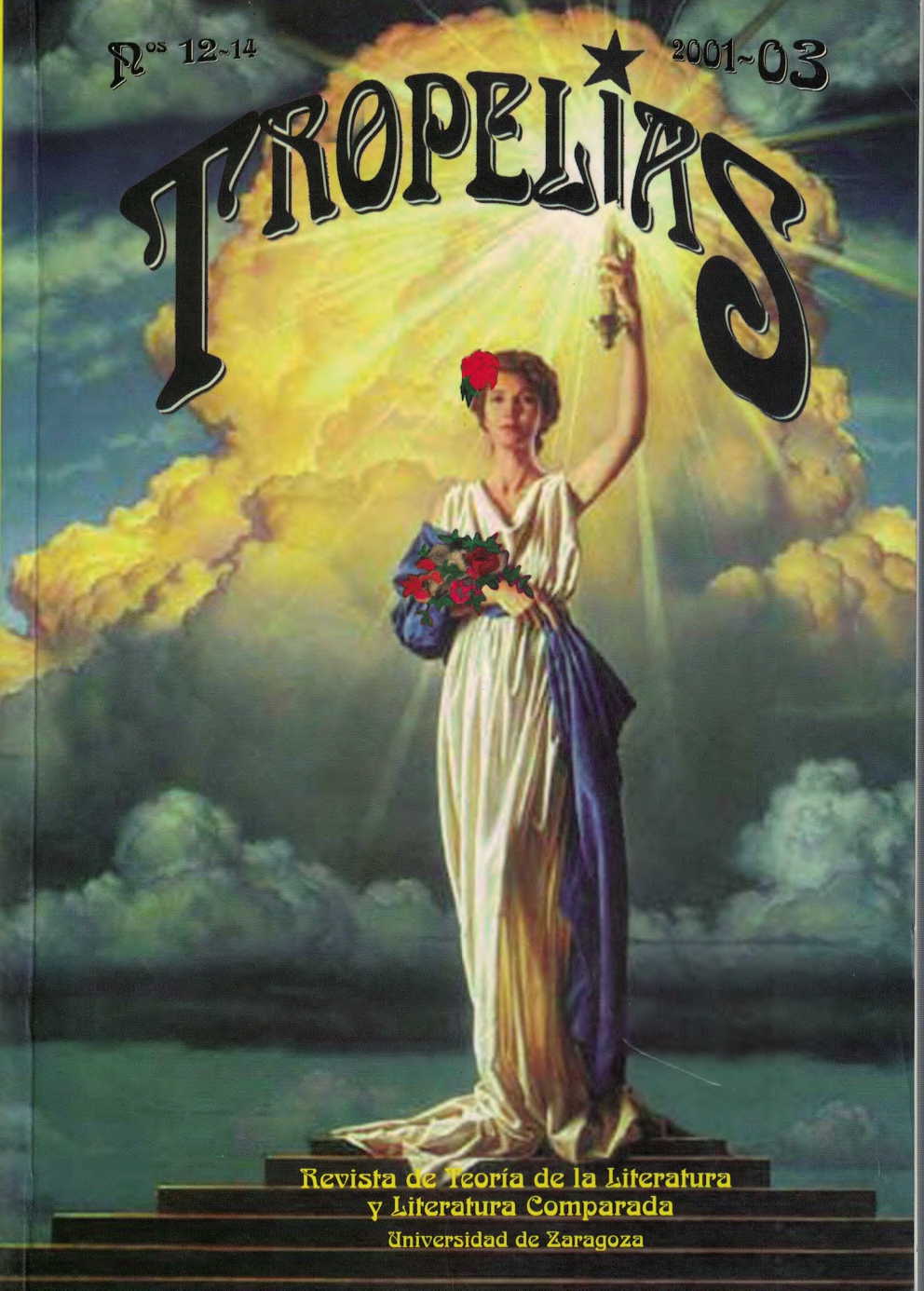Dos versiones de la hibridez: la representación de la mezcla de sangre en Tirso de Molina y en el Inca Garcilaso de la Vega
DOI:
https://doi.org/10.26754/ojs_tropelias/tropelias.200312-145794Palabras clave:
Dos versiones de la hibridez: la representación de la mezcla de sangre en Tirso de Molina y en el Inca Garcilaso de la VegaResumen
A través del análisis de dos obras del Siglo de Oro, Amazonas en las Indias de Tirso de Molina y Comentarios reales de los incas del Inca Garcilaso de la Vega, el presente artículo busca mostrar la noción de América en la época como una región híbrida. La comedia Amazonas en las Indias es interpretada a través de la teoría de Deleuze y Guattari sobre la presencia de la figura edípica en una estructura capitalista de producción social (Capitalisme et schizophrénie. L'Anti-Œdipe). Los Comentarios reales son comprendidos como la creación de una identidad narrativa (concepto acuñado por Paul Ricoeur) tanto individual como colectiva. De esta manera, una característica central de la colonia, tanto desde una perspectiva psicoanalítica como discursiva, es la hibridez étnico-cultural, lo cual se puede considerar una prefiguración del desarrollo histórico posterior de una concepción no etnocéntrica, híbrida, de la cultura y el pensamiento.
Descargas
Descargas
Publicado
Cómo citar
Número
Sección
Licencia
Derechos de autor 2021 Julio Hans C. Jensen

Esta obra está bajo una licencia internacional Creative Commons Atribución 4.0.
Los artículos enviados a la revista Tropelías deben ser originales e inéditos, no publicados previamente en cualquier soporte. Únicamente se aceptará material publicado total o parcialmente con anterioridad, o que esté en proceso de evaluación en otra revista, si se hace constar la causa de tal duplicación y se facilita la fuente donde ha aparecido dicho artículo.
Las imágenes que se incluyan en los artículos estarán libres de derechos de reproducción y, en caso contrario, los autores deberán presentar los permisos para su publicación y asumir los pagos derivados de ello.
Los artículos y reseñas publicados en la revista Tropelías pueden ser incluidos en repositorios temáticos o institucionales desde el momento de su publicación, sin modificación alguna e indicando claramente su procedencia.


